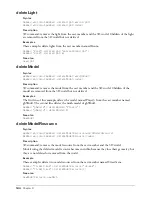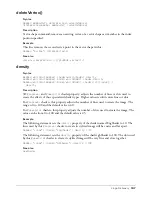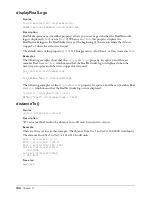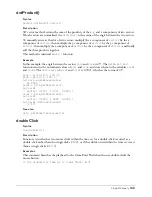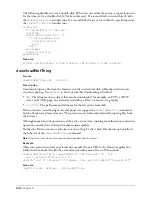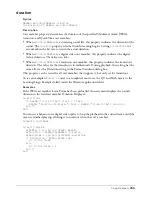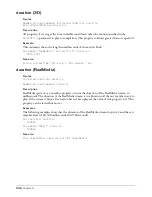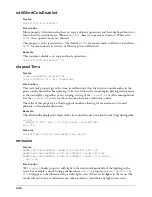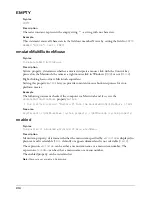
Lingo Dictionary
195
displayFace
Syntax
member(whichTextCastmember)
.displayFace
member(
which3DCastmember
).modelResource(
whichModelResource
).\
displayFace
Description
3D text property; a linear list indicating which face or faces of the 3D text to display. Possible
values include
#front
,
#tunnel
, and
#back
. You can show any combination of faces, and the list
can be in any order.
The default value of this property is
[#front, #back, #tunnel]
.
For text cast members, this is a member property. For extruded text in a 3D cast member, this is a
model resource property.
Example
In this example, the cast member named Rugsign is a text cast member. This statement sets the
displayFace
property of Rugsign to
[#tunnel]
. When Rugsign is displayed in 3D mode, its
front and back faces will not appear.
member("Rugsign").displayFace = [#tunnel]
In this example, the model resource of the model named Slogan is extruded text. This statement
sets the
displayFace
property of Slogan’s model resource to
[#back, #tunnel]
. The front face
of Slogan will not be drawn.
member("scene").model("Slogan").resource.displayFace = \
[#back, #tunnel]
See also
extrude3D
,
displayMode
displayMode
Syntax
member(whichTextCastmember)
.displayMode
Description
Text cast member property; specifies whether the text will be rendered as 2D text or 3D text.
If this property is set to
#Mode3D
, the text is shown in 3D. You can set the 3D properties (such as
displayFace
and
bevelDepth
) of the text, as well as the usual text properties (such as
text
and
font
). The sprite containing this cast member becomes a 3D sprite.
If this property is set to
#ModeNormal
, the text is shown in 2D.
The default value of this property is
#ModeNormal
.
Example
In this example, the cast member named Logo is a text cast member. This statement causes Logo
to be displayed in 3D.
member("Logo").displayMode = #mode3D
See also
extrude3D
Summary of Contents for DIRECTOR MX-LINGO DICTIONARY
Page 1: ...Lingo Dictionary Macromedia Director MX...
Page 756: ...Index 756...




